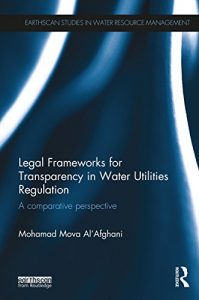Transparency in the regulation of water utilities is essential in order to ensure quality and fairness. This book explores and compares different regulatory arrangements in the water utilities sectors in three jurisdictions to determine which regulatory and ownership model is most transparent and why. The three jurisdictions considered are England (UK), Victoria (Australia) and Jakarta (Indonesia).
Following an introduction to the importance of transparency in water utilities regulation, the book provides an overview of the three chosen jurisdictions and their legal and institutional frameworks. Through a comparison of these the author explores the contested and difficult terrain of "privatization", as (often) opposed to public ownership, in which it is shown that the relationships between transparency and ownership models are not as clear-cut as might be assumed.
Chapters consider various aspects and outcomes of the regulatory process and the role of transparency, including topics such as regulators' internal governance mechanisms, utilities corporate governance, licensing and information flow, freedom of information and transparency in tariffs and pricing, as well as customer service. The book concludes with a summary of lessons learned to inform the refinement of transparency in utilities regulation.












